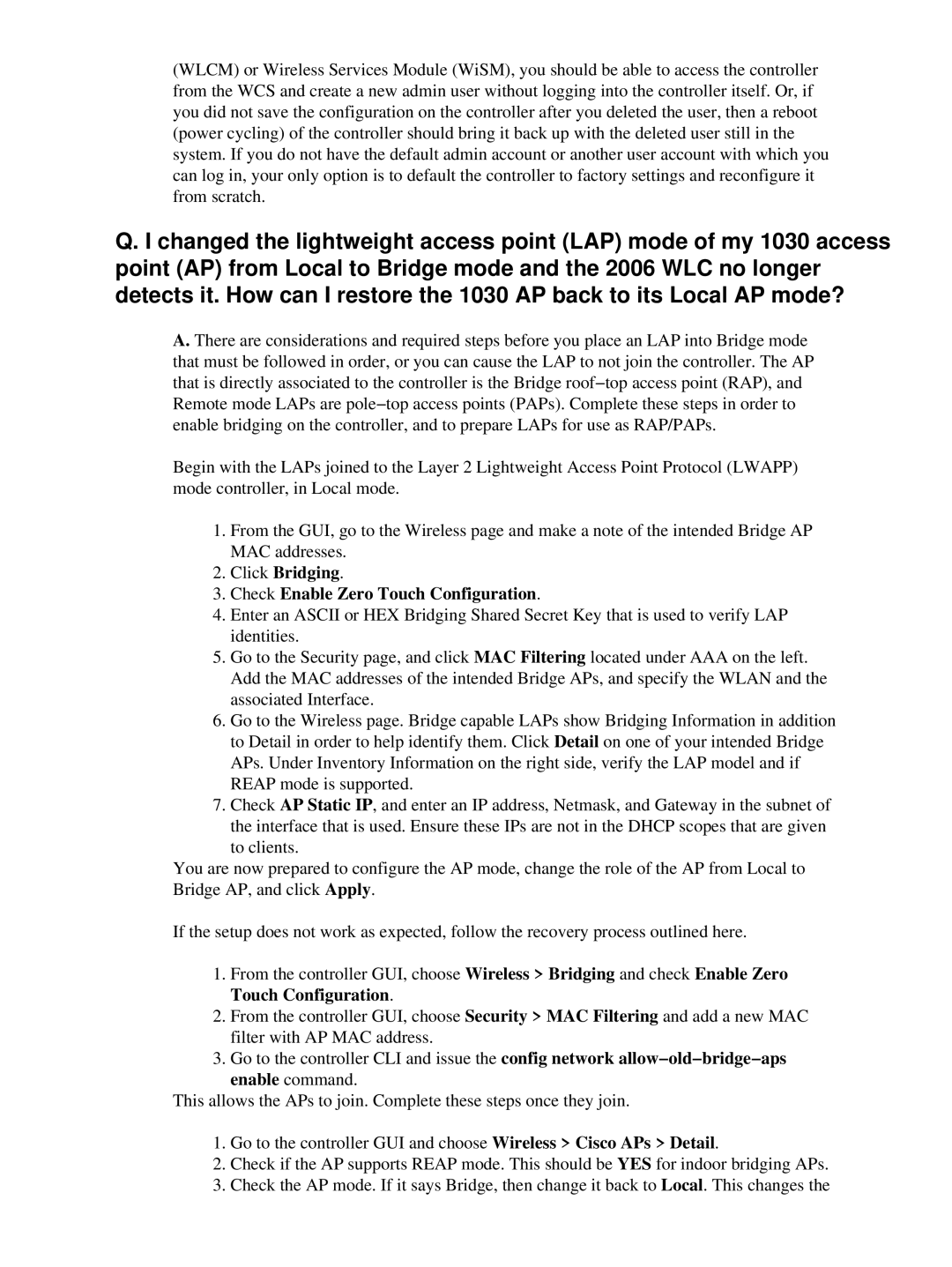(WLCM) or Wireless Services Module (WiSM), you should be able to access the controller from the WCS and create a new admin user without logging into the controller itself. Or, if you did not save the configuration on the controller after you deleted the user, then a reboot (power cycling) of the controller should bring it back up with the deleted user still in the system. If you do not have the default admin account or another user account with which you can log in, your only option is to default the controller to factory settings and reconfigure it from scratch.
Q. I changed the lightweight access point (LAP) mode of my 1030 access point (AP) from Local to Bridge mode and the 2006 WLC no longer detects it. How can I restore the 1030 AP back to its Local AP mode?
A. There are considerations and required steps before you place an LAP into Bridge mode that must be followed in order, or you can cause the LAP to not join the controller. The AP that is directly associated to the controller is the Bridge roof−top access point (RAP), and Remote mode LAPs are pole−top access points (PAPs). Complete these steps in order to enable bridging on the controller, and to prepare LAPs for use as RAP/PAPs.
Begin with the LAPs joined to the Layer 2 Lightweight Access Point Protocol (LWAPP) mode controller, in Local mode.
1.From the GUI, go to the Wireless page and make a note of the intended Bridge AP MAC addresses.
2.Click Bridging.
3.Check Enable Zero Touch Configuration.
4.Enter an ASCII or HEX Bridging Shared Secret Key that is used to verify LAP identities.
5.Go to the Security page, and click MAC Filtering located under AAA on the left. Add the MAC addresses of the intended Bridge APs, and specify the WLAN and the associated Interface.
6.Go to the Wireless page. Bridge capable LAPs show Bridging Information in addition to Detail in order to help identify them. Click Detail on one of your intended Bridge APs. Under Inventory Information on the right side, verify the LAP model and if REAP mode is supported.
7.Check AP Static IP, and enter an IP address, Netmask, and Gateway in the subnet of the interface that is used. Ensure these IPs are not in the DHCP scopes that are given
to clients.
You are now prepared to configure the AP mode, change the role of the AP from Local to Bridge AP, and click Apply.
If the setup does not work as expected, follow the recovery process outlined here.
1.From the controller GUI, choose Wireless > Bridging and check Enable Zero Touch Configuration.
2.From the controller GUI, choose Security > MAC Filtering and add a new MAC filter with AP MAC address.
3.Go to the controller CLI and issue the config network allow−old−bridge−aps enable command.
This allows the APs to join. Complete these steps once they join.
1.Go to the controller GUI and choose Wireless > Cisco APs > Detail.
2.Check if the AP supports REAP mode. This should be YES for indoor bridging APs.
3.Check the AP mode. If it says Bridge, then change it back to Local. This changes the
